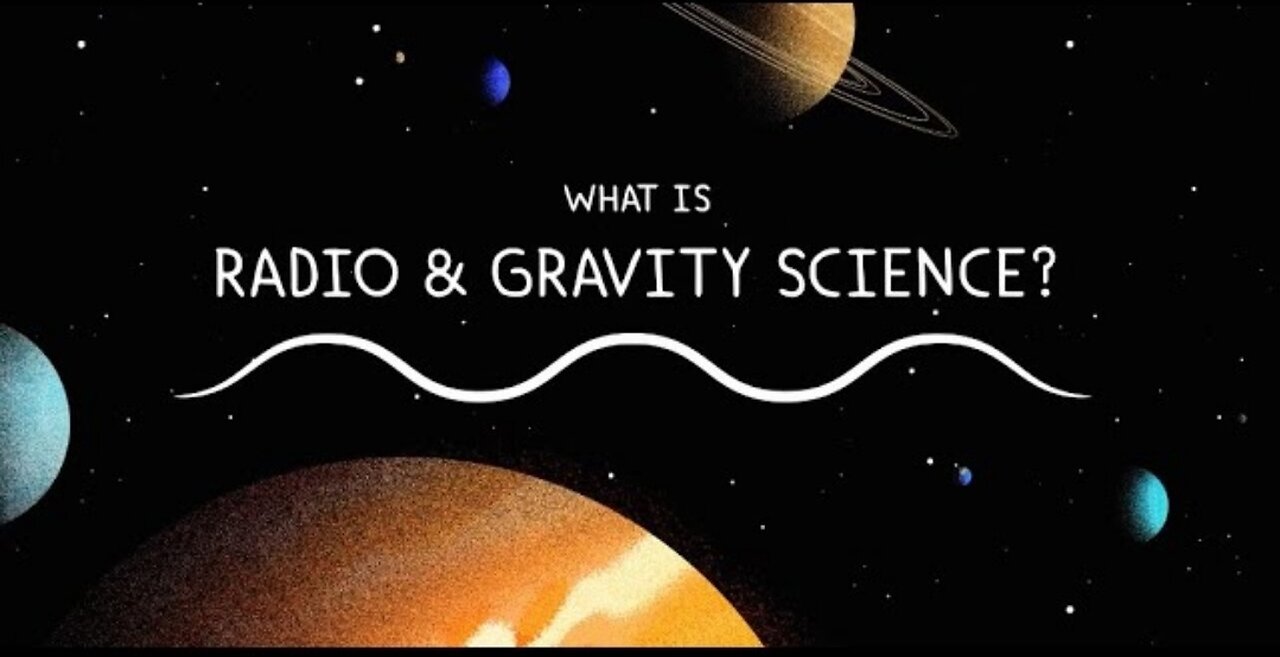Premium Only Content

How NASA Uses Gravity and Radio Waves to Study Planets and Moons
The Deep Space Network, NASA's international collection of giant radio antennas used to communicate with spacecraft at the Moon and beyond, helps scientists and engineers use gravity and radio science experiments to learn more about our planetary neighborhood.
After reaching a spacecraft reaches its destination, it uses radio antennas to communicate with the Deep Space Network, which in turn transmits radio signals back to the spacecraft. Every spacecraft travels in a predetermined path emitting radio signals as it orbits around its target. Scientists and engineers can infer the spacecraft's location and how fast it's going by measuring changes in the spacecraft's radio signal frequency. This is made possible by the Doppler effect, the same phenomenon that causes a siren to sound different as it travels towards and away from you.
The Doppler phenomenon is observed here when the spacecraft and the Deep Space Network antenna move in relation to each other. Differences between the frequency of radio signals sent by the spacecraft as it orbits and signals received on Earth give us details about the gravitational field of a planetary body. For example, if the gravity is slightly stronger, the spacecraft will accelerate slightly more. If gravity is slightly weaker, the spacecraft will accelerate slightly less. By developing a model of the planetary body's gravitational field, which can be mapped as a gravitational shape, scientists and researchers can deduce information about its internal structure.
The Deep Space Network was developed by and is managed by NASA's Jet Propulsion Laboratory (JPL) in Southern California. The antennas of the Deep Space Network are the indispensable link to robotic explorers venturing beyond Earth. They provide the crucial connection for commanding our spacecraft and receiving never-before-seen images and scientific information on Earth, propelling our understanding of the universe, our solar system and ultimately, our place within it.
JPL manages the Deep Space Network for the Space Communications and Navigation (SCAN) Program, based at NASA Headquarters within the Space Operations Mission Directorate.
-
 UPCOMING
UPCOMING
Jeff Ahern
31 minutes agoMonday Madness with Jeff Ahern
-
 1:11:30
1:11:30
Sean Unpaved
2 hours agoCowboys Chronicle: Jerry Jones, Micah Parsons, & the NFC East Battle
20.6K -
 1:53:23
1:53:23
Tucker Carlson
1 hour agoMargaret Roberts Exposes the True Story of the Oklahoma City Bombing and the Ongoing Cover-Up
20.3K45 -
 6:09:03
6:09:03
JuicyJohns
6 hours ago $2.20 earned🟢#1 REBIRTH PLAYER 10.2+ KD🟢$500 GIVEAWAY SATURDAY!
60.7K2 -
 LIVE
LIVE
Viss
3 hours ago🔴LIVE - The Energy, The Tactics, and The Knowledge You Need To Win! - PUBG
127 watching -

RalliedLIVE
1 hour agoWARZONE CHALLENGES WITH DRDISRESPECT & BOB
1.88K1 -
 1:01:03
1:01:03
Timcast
3 hours agoDemocrats SABOTAGE Texas REDISTRICTING, May Be CHARGED
160K125 -
 1:59:07
1:59:07
The Charlie Kirk Show
3 hours agoTexas Dems In Flight + Recess Appointments Or Not? | Sen. Mullin, Halperin, Sen. Scott | 8.4.2025
65.7K19 -
 25:36
25:36
The Quiet Part
4 hours agoThis Is How It Ends—Carney’s EU Obsession Will COLLAPSE Canada
4.25K2 -
 13:37
13:37
Adam Does Movies
17 hours ago $0.30 earnedWar Of The Worlds Is The Worst Movie Of 2025 - Review
3.29K3